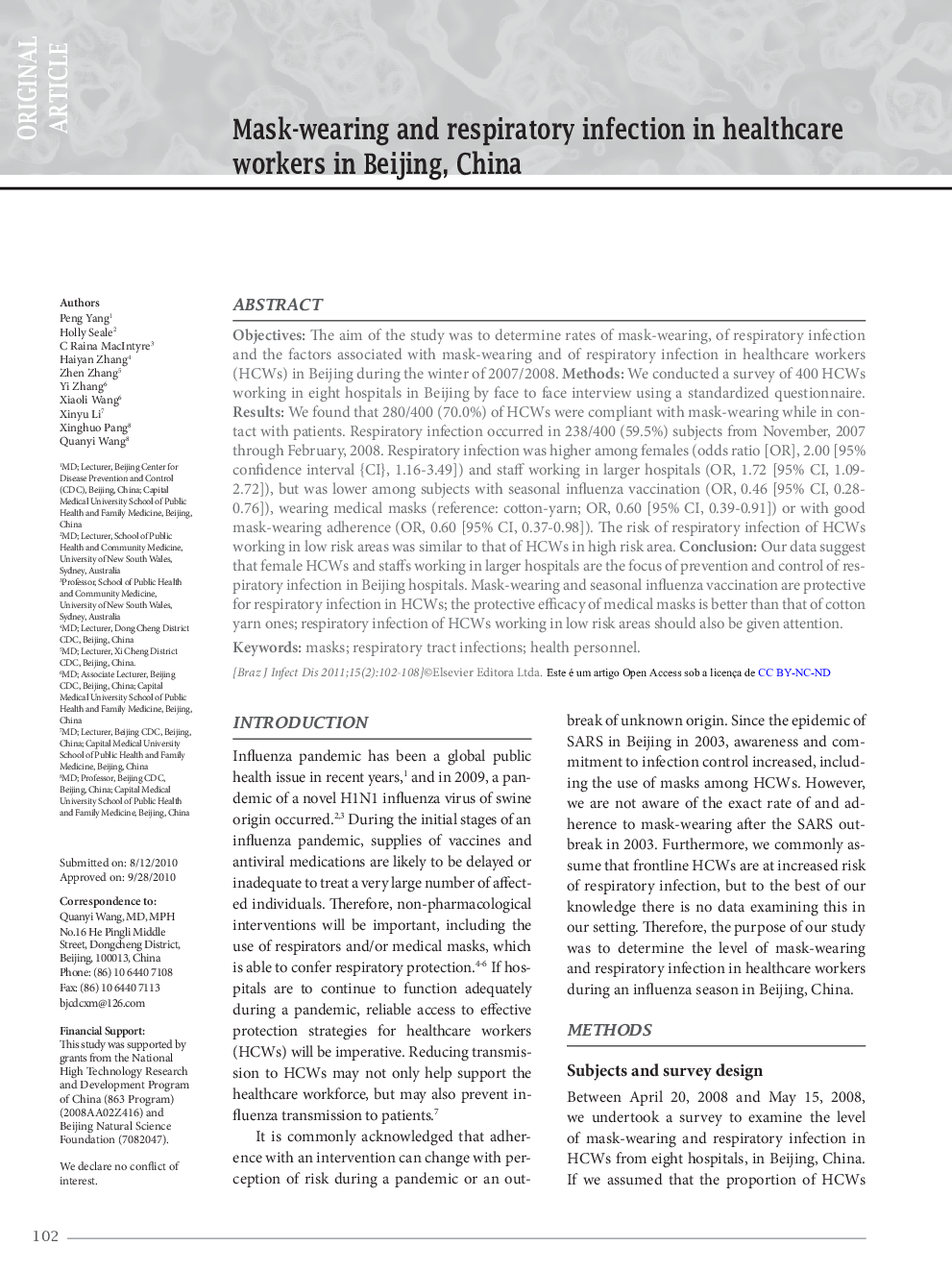| Article ID | Journal | Published Year | Pages | File Type |
|---|---|---|---|---|
| 3344582 | The Brazilian Journal of Infectious Diseases | 2011 | 7 Pages |
ObjectivesThe aim of the study was to determine rates of mask-wearing, of respiratory infection and the factors associated with mask-wearing and of respiratory infection in healthcare workers (HCWs) in Beijing during the winter of 2007/2008.MethodsWe conducted a survey of 400 HCWs working in eight hospitals in Beijing by face to face interview using a standardized questionnaire.ResultsWe found that 280/400 (70.0%) of HCWs were compliant with mask-wearing while in contact with patients. Respiratory infection occurred in 238/400 (59.5%) subjects from November, 2007 through February, 2008. Respiratory infection was higher among females (odds ratio [OR], 2.00 [95% confidence interval {CI}, 1.16-3.49]) and staff working in larger hospitals (OR, 1.72 [95% CI, 1.09-2.72]), but was lower among subjects with seasonal influenza vaccination (OR, 0.46 [95% CI, 0.28-0.76]), wearing medical masks (reference: cotton-yarn; OR, 0.60 [95% CI, 0.39-0.91]) or with good mask-wearing adherence (OR, 0.60 [95% CI, 0.37-0.98]). The risk of respiratory infection of HCWs working in low risk areas was similar to that of HCWs in high risk area.ConclusionOur data suggest that female HCWs and staffs working in larger hospitals are the focus of prevention and control of respiratory infection in Beijing hospitals. Mask-wearing and seasonal influenza vaccination are protective for respiratory infection in HCWs; the protective efficacy of medical masks is better than that of cotton yarn ones; respiratory infection of HCWs working in low risk areas should also be given attention.
